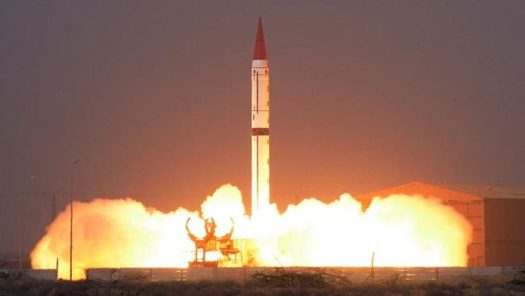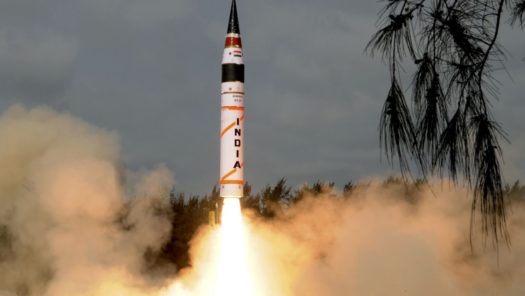Deterrence
Return to article
स्थिरता की नाज़ुकता: पहलगाम के पश्चात् भारत-पाकिस्तान परमाणु सीबीएमएस
पहलगाम हमले के पश्चात् उत्पन्न भारत-पाकिस्तान संकट ने पुनः क्षेत्रीय स्थिरता की नाज़ुक संरचना को तनाव में डाल दिया है। भारत और पाकिस्तान दोनों की ओर से की गई कार्यवाहियों के परिणामस्वरूप सिंधु जल संधि को अभूतपूर्व रूप से स्थगित…

पाकिस्तान के प्रक्षेपास्त्र कार्यक्रम के विरुद्ध प्रतिबंध: दक्षिण एशिया में अमेरिका की बदलती प्राथमिकताएँ
18 दिसंबर, 2024 को अमेरिकी सरकार ने चार पाकिस्तानी इकाइयों पर प्रतिबंध लगाए जिन पर उन लंबी दूरी के प्रक्षेपास्त्रों के विकास में संलिप्तता के आरोप हैं जो 5,500 किलोमीटर से अधिक की मारक क्षमता रखती हैं और जिन्हें अंतरमहाद्वीपीय…

Five Key Concepts to Understand the India-Pakistan Crisis
The recent India-Pakistan crisis drew global attention, but meaningful analysis requires applying an understanding of strategy and technology. This explainer, developed by Stimson’s Strategic Learning initiative, explores five key concepts — deterrence, the stability-instability paradox, escalation, standoff weapons, and crisis…

U.S. Unilateralism on Arms Control and Impact on South Asian Stability
The world has been watching President Donald Trump’s every move closely since his return to the White House in January, and the implications of his presidency for global arms control loom large. The New START Treaty, the last remaining nuclear…

India and Pakistan’s Development of Drones: Implications for Strategic Stability
On 23 August, 2024, a small Indian drone was spotted across the Line of Control in the airspace over Pakistan-administered Kashmir, a reminder of the ever-present tensions between Islamabad and New Delhi. While Pakistan claims it shot down the drone,…

Mapping the Prospect of Arms Control in South Asia
Once considered a factor of stability during the height of the Cold War, the global arms control architecture is now all but crumbling. In South Asia, arms control has always remained elusive, and the prospects for the future seem slimmer…